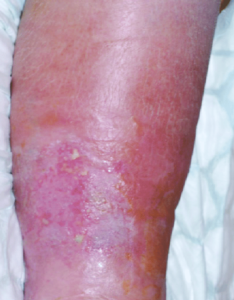 Lymphorrhoea is the leakage or weeping of high-protein lymph fluid from the tissues onto the surface of the skin, which usually manifests as beading or trickling of fluid. It is more common in the legs and genital areas, especially if the prolonged restriction in mobility is an issue, but can also affect other areas of the body, for example, the axillary area.
Lymphorrhoea is the leakage or weeping of high-protein lymph fluid from the tissues onto the surface of the skin, which usually manifests as beading or trickling of fluid. It is more common in the legs and genital areas, especially if the prolonged restriction in mobility is an issue, but can also affect other areas of the body, for example, the axillary area.
The leaking fluid is usually clear and colorless (sometimes straw or amber-colored or milky) if it appears in isolation. If lymphorrhea appears in the presence of wound secretion (exudate), its color and consistency will be dictated by the exudate.
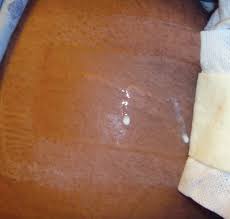 Lymphorrhea often appears as a complication following the removal of axillary or inguinal lymph nodes; it can also be present in lymphedema following minor trauma to the swollen area, especially in vulnerable skin of the elderly or palliative patients.
Lymphorrhea often appears as a complication following the removal of axillary or inguinal lymph nodes; it can also be present in lymphedema following minor trauma to the swollen area, especially in vulnerable skin of the elderly or palliative patients.
Any trauma to the skin, caused e.g., by insect bites, cuts, abrasions, cracks in dry skin, has the potential to allow lymph to weep onto the skin surface. In some cases, lymphorrhea may be the result of a ruptured lymph cysts (lymphocele), which is an abnormal blister-like collection of lymphatic fluid on the skin as a result of injured lymph vessels, often following surgical procedures.
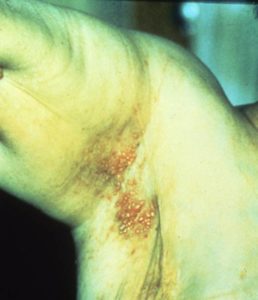
Lymphatic Cysts
While the leakage is often associated with known causes, as described above, it may also start spontaneously, seemingly out of nowhere, most likely due the high pressure of lymph fluid inside the skin tissues. The skin is often so tense with excess fluid that it is unable to stretch fast enough to accommodate the fluid, causing it to split or tear with the slightest bump or nick, resulting in lymphorrhea. The discharge may be mild or excessive, leading to wetness in clothing, compression garments or bandages, footwear, and bedding.
The presence of lymphorrhea can cause secondary complications, such as infections (cellulitis), and further breakdown of the skin, caused by excessive moisture. If lymphorrhea is present in combination with chronic wounds, the caustic nature of the exudating fluid associated with lymphorrhea is known to be destructive to the wound bed, which can lead to more increased and widespread ulceration.
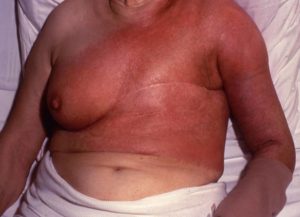
Cellulitis
In order to stop the leakage and to prevent further complications, it is important to initiate treatment immediately. Trained health care professionals and certified lymphedema therapists involved in the care of lymphedema, should be able to initiate proper treatment following a full assessment of the cause of the leakage.
In order to stop the fluid from leaking and to promote healing of the skin damage, a series of steps are essential:
First, the area where the fluid is leaking needs to be cleaned carefully and thoroughly with soap and water to reduce risk of infection. Following this, a moisturizing cream or lotion should be applied to the skin to improve the condition and protect it from further breakdown. The leaking area should then be covered with a sterile, non-adherent and absorbent dressing to prevent further trauma to the skin and to absorb the leaking fluid.
The main component to stop lymphorrhea is compression with padded short-stretch compression bandages, which are applied on top of the dressing and may have to be replaced frequently during the first 2-3 days to remove wet bandages and dressings. It is important to point out that the entire swollen area (for example the entire leg) must be covered with bandages in order to prevent a tourniquet-like effect and subsequent accumulation of fluid below the area affected by lymphorrhea. In addition, the extremity should be elevated as much as possible to reduce the effects of gravity and assist venous and lymphatic drainage.
Following these steps, in most cases, will improve the skin condition and stop the leakage within 2-3 days at which point the regular compression garment should again be applied.
Important:
- If any infection is associated with lymphorrhea, a physician must be consulted immediately in order to take appropriate steps to stop the infection.
- Chronic wounds associated with leaking lymph fluid should be treated by healthcare professionals experienced in wound and lymphedema management.
- Prevention is the key – patients affected by lymphedema should be compliant wearing their compression devices; the skin should be regularly inspected for any cracks or signs of infections; the skin should be kept clean and appropriately moisturized; any damage to the skin (insect bites, scratches, cuts, etc.) in the area affected by lymphedema, must be avoided.
Do you need more information on other topics on lymphedema? Use the list of articles on the left side of this page and select any article you are interested in.
Join Lymphedema Guru, a Facebook page solely dedicated to informing about all things related to lymphedema – news, support groups, treatment centers, and much more
Dear Lymphedema Blog Reader – if you like the contents on this website, please help to keep it going. A great amount of work and research is necessary to provide you with up-to-date information on this site. Your donation supports these efforts and associated administrative costs. Surplus funds will be donated to Lymphedema/Lipedema-related charitable endeavors. Please donate using the “Donate Now” button on the right upper hand of this page – Thank You!
Further Reading:
https://www.ncbi.nlm.nih.gov/pubmed/28467225

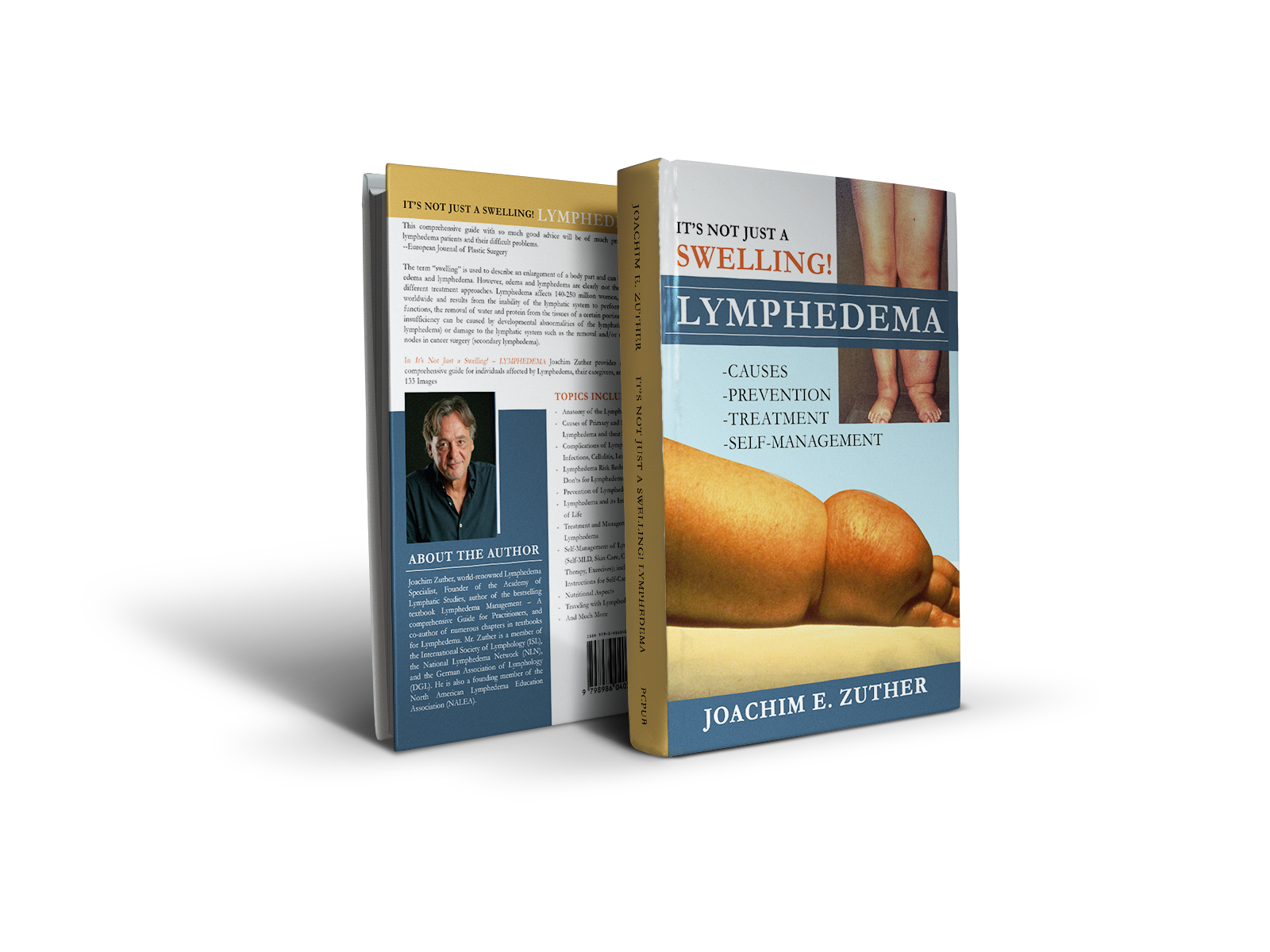
 Joachim Zuther, Lymphedema Specialist.
Joachim Zuther, Lymphedema Specialist. 

Two days ago I had a bicycle accident where I got a wound on my lymphedema leg, with the lymph leaking and a little bit of bleeding.
Applying a topical gel on it 4 or 5 times, I simply let it air dry, making sure that nothing would touch the area, except for gently blotting the fluid a few times with a clean tissue. No bandage, no dressing, no water and soap, no nothing, only this gel.
The leakage stopped completely within 4 hours and since then, no problem! This was in the night, and next day, Monday I could just put on my compression stockings. The wound is healing nicely.
Another time it was only one pore the lymph was oozing from; I used this same gel and it stopped within MINUTES.
Would you be interested to look into it, Dr Joachim? I think it could be of great help for others, too.
I can email you photos and info about the gel.